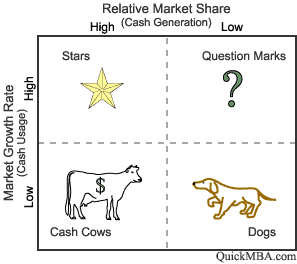Digest of The Provided Sample on Business Strategies and Planning
Business strategies are a course of actions designed to meet desirable goals, formulated by top management and thus are implemented by middle-level managers. These are formulated to achieve the mission, vision, and objectives of Tesco. It includes swot analysis, pestle analysis, analysis of the factors, the members involved in the planning process, and the techniques used in strategic planning.
Introduction
Business strategies is a course of action which is designed to achieve certain specific and measurable goals. These strategies are formulated by the top management and implemented by the middle level managers under the observation of top level. These strategies are formulated in order to achieve the mission, objectives and goals of the firm by the the effective utilization of strategic thinking. In this report strategic thinking, vision, mission, objectives of Tesco,techniques have been covered. Moreover, various strategies are also suggested for the different target markets of Tesco. Further, SWOT Analysis and the PESTLE Analysis have been conducted in order to perform the organizational audit of Tesco (Alfes and et.al., 2013).

Task 1
Introduction : Business strategy is a long term planning or action which is designed to achieve a specific goal and the long term objectives of the firm. Business strategies are formulated to achieve vision, mission, objectives, goals and objectives of the firm by making effective use of core competencies, strategic thinking and planning system
Reason : this task has been undertaken in order to know about mission, vision of Tesco, analysis of factors and techniques of strategic planning
Analysis
(a) Mission, vision and objectives of Tesco
Vision can be described as the statement that why an enterprise exists. The vision statement for the Tesco is “To be the most highly valued business in sight of the customers they serve, the communities in which they operate, their loyal and committed colleagues and of shareholders” (Ayanda, 2011).
Mission can be defined as the long term plans of the firm that where it wants to see itself in near future. Mission for the Tesco is “We make what matters best, together”. The objectives of the Tesco is “ to offer the best value to customers at most competitive prices (Berry,and et.al., 2011). To offer the product considering key issues such as health, nutrition, hygiene, safety and animal welfare and also provide support in the welfare of the community and the protection of the environment.
Core competency can be described as an skill or expertise of the individuals working in a firm which helps the firm in achieving competitive advantage'' (Basili, and et.al, 2009). The core competency of Tesco is “customer focus, effective supply system and brand focus on different market segments”. Tesco use the information to analyze and understand the customers very well and also design and implement supply system effectively.
Assignment Prime is an online assignment writing service provider which caters the academic need of students.
Get Best Pricing Quotes Free Samples Email : help@assignmentprime.com Order Now(b) Analysis of factors
Members involved in planning process
In the planning process of the organization all the members must be involved in it so that the plans are effectively formulated and executed and all the important areas are covered under planning process. The planning is made by the top level of the organization and executed by the middle level of the organization under observation of the top level managers (Batt and Nohara,2009) The lower level employees perform day by day operations to achieve the objectives of the firm.
Top level
In Tesco, the plans are formulated by the senior level executives while considering many important factors such as employee engagement and advancement. Senor level managers plays a critical role in the planning process.
Middle level
The plans are formulated by the senior level executives and power is delegated to managers to implement plans in the firm under observation of senior executives. The the execution of plan middle level pays their attention on the effective implementation (Burn, Marshall and Barnett, 2007).
Lower level
The lower level of the firm is also involved in the planning as they perform day to day operations related to the planning process as suggested by the middle level managers such as budgeting, purchase of raw material and inventorying.
Short term and long term targets
Long term objective of Tesco
“To Meet the needs of customers by constantly seeking and taking action on their views related to innovation, product quality, choice, store facilities and services. To provide goods or services on the affordable prices to its consumers”.
Short term target Tesco
The short term objective of the company is “to develop employee capabilities by imparting training to Them and also developing core competencies in the firm” (Thompson and Arsel, 2004)
Appropriate timing for the planning
Planning is an ongoing activity but it also involves a specific time period in which it had made. In the planning firstly the short term, medium and long term objectives are separated in order to achieve it on time. Long term goals are only desires while as short term goals are achieved according to their deadlines.
(c) Techniques of Strategic planing
Strategic planing can be defined as the organization's process of formulating, implementing planning and allocating resources. There are various techniques of strategic planning such as BCG matrix and PIMS for effective planning. PIMS is a study designed to evaluate the actions and results of business assignment. It is useful for the managers to understand and react to the business environment (Davidson, 2004)The strategic planning techniques used by the Tesco is BCG matrix. The BCG matrix show a direct relationship between cash eaters and cash generators of the market share. . The BCG growth share matrix shows the various business units on a graph of the market growth rate versus market share relative to competitor. Resources are allocated to each business units according to where they are stand on the graph as follows:-

Illustration 1: BCG mtrix
Source: Berry, and et.al., 2011
Cash cow
It covers age market share as it is at the maturity stage of product life cycle where the sales become constant, there is no increase or decrease in the sales. It requires little investment and cash generated from cash cows is again invested in the other business units. At this stage Tesco uses diversification and introduce new product line to increase the sales of the firm (Teece, 2010).
Stars
It also cover a large market share as the products the growth stage of product life cycle. At this stage it may generate cash and high investment is required to maintain the market leadership. If the stars are proper taken care, may be converted into the cash cows. Tesco uses advertisements and promotional strategies for cover more market.\
Question marks
It covers low market share in the market as the product is at the introductory stage of product life cycle. The resources are required to grow in the market share and if proper attention is given on the question marks it becomes stars but if ignored it may become dogs (Rumelt, 2005).
Dogs
It covers the small market share in the industry as the products at the decline stage of product life cycle. At this stage cash is nor required as it ties up the capital and resources are deployed in other business units.
In Tesco, BCG matrix provides a framework for allocating resources among different business units and allows it to make comparison in many business units.
Conclusion and recommendations: It is observed that BCG Matrix is helpful in managing the portfolios of different product lines or business units. All the members of organizations participate in the planning process but the critical role is played by the top level as formulation of planning is a very complex task. Tesco should consider health, hygiene and safety in order to deliver value to its customers.
Task 2
(a) strategies adopted by the TescoThere are various strategies such as substantive growth, limited growth, retrenchment and stability strategy.
Retrenchment strategy
The strategy used by the firms to reduce the diversity or size of functions performed by the firm in order to become financially stable. It involves withdrawing firm from certain customers groups or discontinuation in selling of some products. In Tesco, retrenchment strategy creates advantages such as reducing costs, improving efficiency and improve competitiveness The disadvantages of retrenchment for Tesco include decline in growth, decreased profits, smaller workforce, reduction in productivity ( Crawford and Iriberri, 2007)
Stability strategy
In stability strategy, the firms stop to make expense on entering into new ventures as it does not enter in any market or does not launch any new product. In Tesco. Th stability strategy is used when managers feel that the firm is performing well as it is gaining competitive advantage and have no threat of competitors (Ansoff, 2010). But if Tesco use stability strategy the profit of the firm will be reduced and there will be always a threat of competitors.
Substantive growth strategy
Substantive growth strategies refers to the growth of market share by using joint venture, merger, acquisition, diversification. If Tesco uses substantive growth strategy it can lead in the future and also can create wealth (Baumgartner and Korhonen, 2010). But the obvious disadvantage of the firm is that competitors will be emerge and tries to phase out the firm.
Limited growth-strateg
In limited growth stage, there will be a limited expansion in the market share or little diversification in the product line. The disadvantage for the Tesco is that it could not take advantage of economies of scale. The objective of Tesco is to earn more by customer satisfaction so by limited expansion the company can not grow (Abraham, 2005)
(b) The appropriateness of the strategy
Tesco can use substantive growth strategy to cover wide market share as it involves horizontal integration, vertical integration, merger, acquisition and joint venture. The firm can adopt different strategy for different segment according to its suitability. The growth strategies will result into the organizational effectiveness for Tesco. The growth leads to the large scale production which leads to the cost reduction and efficient use of resources. The firm can also take the advantage of geographical differences as lower its cost of operation by operating its plant at locations which provide the lowest cost. The firm can also cover administrative expense as the capital intensive firms will be able to spread its cost over the business (Zahra and Nambisan, 2012).
Task 3
Introduction : The firms use value chain analysis, SWOT Analysis and also use culture and values for conducting the organizational audit.
Reasons of this task : this task has been performed in order to identify the strengths, weakness, opportunities and trends emerged in the external environment.
Analysis
(a) SWOT analysis of Tesco
Value chain analysis ac be defined as an set of activities which are designed to provide value to the customers. SWOT analysis can be defined as identifying the strengths, weakness of the firm and also grabbing the marketing opportunities and overcoming the external threats. In SWOT Analysis the strengths and weakness are internal factors while the opportunities and threats are external factors. In this report tesco is using SWOT Analysis for organizational audit.
Strengths
- Tesco is market leader in UK and its global presence around Europe, South America, North America, North Africa and Asia.
- Tesco had won many awards for customer experience, shopping experience and excellence in retailing (SWOT Analysis of Tesco, 2015)
- TESCO had gain sales growth of 13% for UK markets and 26% growth in international market
- Tesco is one of the largest and most profitable supermarket and retail formats in the world.
- It has improved the use of technology in its operations, creating greater cost efficiency and increased service experiences
Weakness
- Tesco is operating at international level but its global presence is limited to few countries.
- It was involved in some controversies that led to negative media coverage and bad corporate image.
- It's Financial profits were impacted through bad debt, credit card arrears and household insurance claims.
- Tesco made little expense on the market research as it should make more expense on research (Huff and et.al, 2008)
Opportunities
- It can made strategic alliances with other brands to offer more products or attract more consumers in specific target markets.
- In under performing countries, it can use joint ventures with the local company so market research can be prove beneficial to improve performance in those areas.
- It can also offer online shopping as well as its home delivery services to some areas.
- There are opportunities of growth for Tesco in the private label market.
Threats
- A rise in the food prices around the world can also reduce the disposable income and purchasing power of the customers.
- A rise in the price of wages can also have a impact on the price strategy of Tesco
- Rise in the cost of raw material also creating a threat to the Tesco as it decreases its profitability.
- The sales of goods is decreasing due to crisis in the UK (SWOT Analysis of Tesco, 2015)
(b) PESTLE Analysis and Porter's 5 forces analysis of Tesco
Threat of substitute products and services
The threat of substitutes in the retail market is low for food items and medium to high for non-food items. In the food retail market, the substitutes of major food retailers are small stores, off licenses and organic shops which can not be considered a threat to Tesco that provide high quality products at low prices (Berry and et.al., 2011) Tesco is also opening stores in local towns and city centers to cover wide market and to beat these substitutes. The threat of substitutes for non-food items is high. It is noticed that as during economic recession, customers will be attracted towards discounted prices so Tesco may be threat to the others.
Threat of entry of new competitors
The threat of entry of new competitors into the food retail industry is low as large capital investments is required to gain competitive advantage and to create a brand name (Batt, and Nohara, 2009) Tesco, Asda, Salisbury's and Morrison already have captured the market share and they all covers for 80% of all in the sales in UK. Thus, if any new entrants enters to market it have to produce something at a every low price with high quality to create market value.
Entry of rivalry firms
The level of entry of competitive rivalry in the food and grocery retail industry is extremely high. Tesco is facing high competition from its t competitors such as ASDA, Sainsbury and Morrison which are competing with each other in context of price, products and promotions. ASDA is one of the key competitors in this segment with an increase of market share from 16.6% to 16.8% during 2009 to 2010.. The slow market growth results into increasing market shares from competitors which is a threat for Tesco’s market leadership position (Huczynski, 2012).
Bargaining power of buyers
The bargaining power of buyers is fairly high in the UK market. If products contains a little differentiation and are much standardized, the switching cost is very low so it is very easy for customer to switch from one brad to another. It has been noticed that customers are attracted towards the low prices, and online retail shopping as they can make comparison easily on different brands.
Bargaining power of suppliers
The bargaining power of suppliers is fairly low. It is noticed that the suppliers are involved in major food and grocery retailers. Hence, the position of the retailers like Tesco, ASDA, and Sainsbury’s is further strengthened and negotiations are positive in order to get the lowest possible price from the suppliers (Berry and et.al., 2011). Tesco purchases raw material in bulk but if the supplier will increase its prices
(c) Stake holder analysis
Stake holder analysis can be defined as an analysis of the expectations and beliefs of the stakeholders of the firm. The stake holder mapping includes four steps as mentioned below
- identifying stake holders
- prioritizing stake holders
- understanding the key holders
- engaging the stake holders
(d) Reasons for choosing SWOT analysis as internal and external analysis
In this report Tesco had used SWOT analysis through which the external and internal environment had analyzed. On the basis of this analysis various weaknesses have been identified such as Tesco is operating at international level but its global presence is limited to few countries. It was involved in some controversies that led to negative media coverage and bad corporate image. It's Financial profits were impacted through bad debt, credit card arrears and household insurance claims (Huczynski, 2012).Tesco made little expense on the market research as it should make more expense on research. The Tesco can overcome from theses weaknesses by using different growth strategies for each different segment. The Tesco can expand its global presence around the world by entering in new markets through joint ventures with local vendors or strategic alliance. The company can also increases its financial profits by launching new products as if the company launch new product at large scale the cost will be reduced and profit will definitely increases.
Conclusion and recommendation : If the firm will enter in new markets it will generate higher profits so it can also investment a big amount in the research and development. It is observed that Tesco may switch to another supplier so the bargaining and negotiation is always in favor of it. This organization should enter into the online marketing and private label markets to achieve growth and expansion.
Task 4
(a) Role of senior management , head of departments and individual stores managers
The role of senior manager in strategic management is described below:-
- The senior management must understand their responsibilities in strategic management hence, the resources must be allocated effectively and authorities must be delegated properly.
- The senior managers are also liable for establishing a climate in the organization that is suitable for strategic management (Ansoff, H. I., 2010)
- The senior managers also play a significant role in setting design of the process which is appropriate to the unique features of the Tesco.
- The CEO is responsible for reporting the results of the strategic management process to the board of directors of Tesco.
- The senior mangers must get involved in doing planning the process effectively.
The role of head of departments in Tesco in strategic planning is described below:-
- The head of departments are responsible for conducting research to support and coordinate the department's strategic plan
- They also Identify the essential adjustments in organizational designs and implement them effectively
- The head of departments also identify potential barriers or gaps created by human system resistance in their department and tries to remove this.
- They are also responsible for monitoring and assessing their departmental progress toward strategic planning goals and also found the deviations in the process (Baumgartner, and Korhonen, 2010).
- The head of departments serve as the department liaison with external stakeholders in planning the strategic management activities.
- Identify proactive approaches to issues through trend analysis and predictive indicators
- The head of departments also assist middle managers in implementation of the change process effectively.
The stores managers of individual departments of Tesco plays following roles and responsibilities :-
- The main duty of a retail store manager is focusing on the hiring, firing and maintaining of employees.
- A retail store manager is responsible for compensating the employees and ensuring that the paychecks match the working hours of each individual.
- Store manager also must take care of inventory at the store as he must check retail store stock order goods and also maintain the track of procurement of goods at the store
- The retail store manager also perform responsibilities towards customer service as he must take feedback on the customers shopping experience at the store and listen their complaints to provide a compliment to an employee or the store itself (Zahra, and Nambisan, 2012)
- Store manager is also responsible for handling advertising and promotional displays to attract more and more customers towards the store.
Following are the resources required for the implementation of the strategy
Finance
The suggested strategy for the Tesco is substantive growth strategy in its target market and the different strategy is adopted for each different segment. In implementation of growth strategy, the Tesco will required a large finance (Ayanda, 2011) For growth purpose the Tesco can have a strategic alliance with other local vendors or it may also open new stores to increase its global presence. To assist these objective a big amount will be required and this requirement can be fulfilled by taking loan from banks or by issuing shares
Human resource
The proposed strategy for Tesco is the growth strategy and for this purpose the Tesco will open new stores in many cities around the world. To operate these new stores Tesco must need to hire employees. The employees must be hired by an effective recruitment and selection technique so that best employees could be hired and retained for long term in the organization.
Material
To open the new stores around the world Tesco will be required materials such as furniture, systems and raw material. The Tesco will also need a building to open the store and the ambiance of the store also must be attractive. Tesco can also establish a tie up with the local suppliers for purchase of raw material (Teece. 2010)
Time
To implement the growth strategy in the organization is not a matter of short period, it requires a long period of time. It is very easy to plan out the growth strategy but it take years to implement the strategy in real term. Firstly the plans are made, resources and finance are collected then the strategy is implemented.
(c) Importance to Tesco of setting SMART objectives to imperilment the proposed strategy
The SMART objectives help the Tesco to clarify its vision and make it focus on the strategies as if the vision will be clear to the managers the strategy can be implemented in context of its vision. The SMART objectives also helps the firm in identifying their priorities and move it forward on the right direction (Ayanda, 2011) The implementation of strategy becomes very easy when the objective are clearly defined and the responsibilities are delegated properly. Smart goals are important in making best use of time. Setting objectives that are specific, measurable, achievable, realistic and time-bound will help you not to waste time. If the goals are not specific, it can misguide the employees by having excess information. If the goals are highly ambitious and not measurable, the managers become demotivated and show no interest to achieve it so it is very important to have SMART objectives.
Conclusion
Conclusively, it can be said that the Tesco holds the position of one of the largest retailers around the world. This success of Tesco is not by chance as it and came from effective leadership and management. The objectives setting of Tesco is SMART as it helps it in defining its vision clearly which assist the firm in implementing the strategies. In Tesco all the aspects of business are clearly measured and plans are adopted to to meet the targets. The firms use value chain analysis, SWOT Analysis and also use culture and values for conducting the organizational audit. appropriateness of the strategy. In this report substantive growth strategy are suggested for Tesco to cover wide market share as it involves horizontal integration, vertical integration, merger, acquisition and joint venture.
Visit the sample section of our website and enjoy more such informative write-ups written by our Australian assignment help professionals.
References
- Abraham, S., 2005. Stretching strategic thinking. Strategy & leadership. 33(5). pp. 5-12.
- Alfes, K. and et.al., 2013. The link between perceived human resource management practices, engagement and employee behaviour: a moderated mediation model. The international journal of human resource management. 24(2). pp. 330-351.
- Ayanda, O. J., 2011. Strategic human resource management and organizational performance in the Nigerian manufacturing sector: An empirical investigation. International Journal of Business and Management. 6(9). pp. 46.
- Basili, V. R. and et.al, 2009. Determining the Impact of Business Strategies Using Principles from Goal-oriented Measurement. In Wirtschaftsinformatik. 25(1) pp. 545-554.
- Batt, R. and Nohara, H., 2009. How institutions and business strategies affect wages: A cross-national study of call centers. Industrial & Labor Relations Review. 62(4). pp. 533-552.
- Baumgartner, R. J. and Korhonen, J., 2010. Strategic thinking for sustainable development. Sustainable Development. 18(2). pp. 71-75.
- Berry, A. B. and et.al., 2011. Issues in special education teacher recruitment, retention, and professional development: Considerations in supporting rural teachers. Rural Special Education Quarterly. 30(4). pp. 3.
You May Also Read These Samples:
Global Marketing and Online Business Practices
Global Marketing and Marketing Measures
Global Marketing & Digital Business















